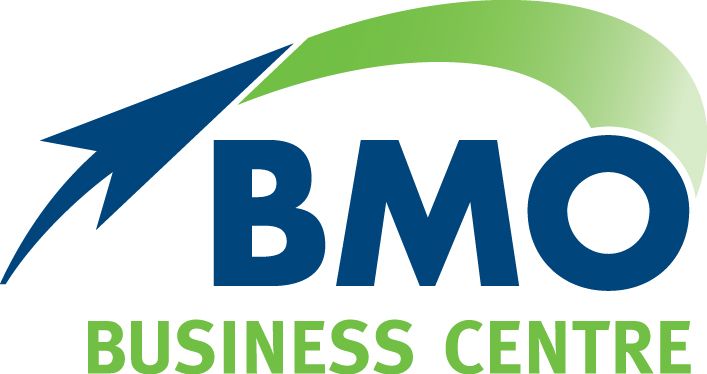Managing Cash Flow & Avoiding Bad Debt in Business
Getting paid on time is essential for managing cash flow and establishing a profitable business. And while staying on top of unpaid invoices helps, there may be times when a customer can’t or won’t pay. Here’s how to handle it.
Debt Management
Even thriving businesses can fail if they run into problems managing cash flow. In fact, the Australian Securities and Investments Commission (ASIC) cites this as a major cause of companies going under. To reduce the likelihood of overdue payments becoming bad debts, it’s essential to establish clear payment terms. You’ll also need tight credit control and systems that motivate your customers to pay promptly. Putting debt management policies and procedures in place can also help when a customer or client suddenly runs into payment issues of their own.
Read on for ways to create a healthy cash flow model and protect your business from bad debt.
6 steps to tighter credit control
Tight credit control is your first line of defence in maintaining your company’s financial health. Here’s how to avoid or limit your exposure to bad debts:
- Draw up new terms of trade and, like all business documents, have it checked by your accountant and lawyer. Require customers to sign your terms of trade before extending credit terms.
- Complete a credit assessment and reference checks before you offer credit to new customers.
- Set reasonable but fair credit limits and instruct your staff to notify you if a customer wishes to exceed an agreed credit limit.
- Approve additional credit extensions in advance.
- Include clear payment conditions in your terms of trade agreement and implement your terms to new customers. Make sure your terms of trade specify when you’ll start to charge interest on overdue amounts and the rate of interest you’ll charge.
- Remember that if you do sell on credit, you need to factor possible payment delays into your cash flow forecast.
Your payment terms
Structure your payment terms to encourage prompt payment. For example, you could offer a five per cent discount for payments made within 30 days, or charge interest on outstanding balances. Be firm – don’t allow the discount if the payment is late, even if it’s only a day late, especially for new customers. If you know your customers well and value them highly, you might make exceptions occasionally as part of fostering those business relationships.
Make your payment terms clear and state that you expect to be paid on time, every time. And, always make contact if payment is late – you'll be more likely to be front of mind when customers schedule payments. You’ll then find that a customer juggling payments is more likely to prioritise you over a business whose systems are more relaxed. Many businesses ‘pay the ones that make the most noise’. Within reason, make sure this is you.
Prevention's easier than collection
Good systems are the best way to avoid bad debt. Here are our top tips:
- Send out your invoices and statements on time, preferably as soon as the job is complete. Larger businesses have set payment cycles, so prompt invoicing means you’re less likely to miss the next payment cycle.
- To ensure your overall business health, keep up-to-date records of what each customer owes you and note any customers approaching their credit limit.
- Follow up immediately once payment is noticeably overdue and try to uncover the problem. You don’t want to appear desperate for the money, but small invoices can often be missed, especially if your client is a large business.
- Judge each case on its own merits. That might involve allowing a debtor an extra month to pay their invoice while they work through cash flow problems. Alternatively, writing off late payment penalties could be in your best interests if you’re chasing another large order from someone. However, if doing so places you in danger of not being able to pay your own bills, then it’s not in your best interest.
Dealing with overdue payments
Your approach to overdue payments will vary depending on the customer and how late the payment is. However your first step should always be to find out why the payment is late. Some common reasons include:
- An issue with your product, service or invoice. Once sorted with the customer, this eliminates any further excuse for not paying.
- An accounting or payment system glitch – which can also usually be resolved quickly and amicably.
- A customer with temporary or long-term cash flow problems. This can be trickier, but if you negotiate an agreed repayment schedule in writing it may enable them to trade out of the current tight spot.
To protect yourself, stick to your terms of trade. Stop supplying customers who haven’t paid their accounts on time and customers in excess of their credit limit.
If cash flow issues become a problem in your business due to late or overdue payments, one solution offered by lenders is invoice and debtor finance, which provides access to funds based on the amount owed to you by debtors.
Tips for debt recovery
If all else fails, seek debt advice from a collection agency or your lawyer about the most effective way to recover the money you’re owed. Before doing so, contact your customer by phone or in person one last time. Let them know you plan to pursue debt recovery services.
Once you hand the debt over to a third party, there’s a strong possibility the customer will realise you’re serious. Typically this means they’ll pay up straight away – in full or in agreed instalments. Most of the time, a letter from a lawyer or agency is enough to do the trick.
If not, and you need to engage a debt collection service, compare costs beforehand, as fees vary. Services are likely to charge a flat fee or a percentage of the debt recovered, or a combination of both – plus any additional charges. Also, consider the amount of money you’re owed. In some cases, it might be better to write off small amounts to preserve your business relationship.
Resolving disputes
Sometimes it’s worthwhile trying to resolve disputes using an intermediary, who'll listen to both sides of the story. Contact the fair trading agency in your state to see if they can act as an informal negotiator. If you can’t resolve the dispute, then your next step may be to get legal advice or lodge a claim with the Small Claims Tribunal.
Source: NAB
Reproduced with permission of National Australia Bank (‘NAB’). This article was originally published at https://www.nab.com.au/business/small-business/moments/manage/planning/avoid-bad-debts
National Australia Bank Limited. ABN 12 004 044 937 AFSL and Australian Credit Licence 230686. The information contained in this article is intended to be of a general nature only. Any advice contained in this article has been prepared without taking into account your objectives, financial situation or needs. Before acting on any advice on this website, NAB recommends that you consider whether it is appropriate for your circumstances.
© 2023 National Australia Bank Limited ("NAB"). All rights reserved.
Important:
Any information provided by the author detailed above is separate and external to our business and our Licensee. Neither our business nor our Licensee takes any responsibility for any action or any service provided by the author. Any links have been provided with permission for information purposes only and will take you to external websites, which are not connected to our company in any way. Note: Our company does not endorse and is not responsible for the accuracy of the contents/information contained within the linked site(s) accessible from this page.


